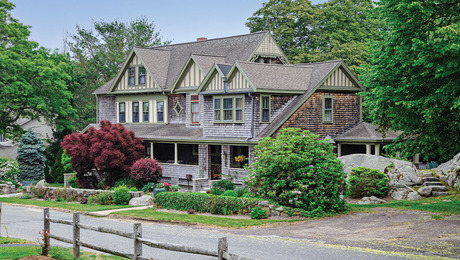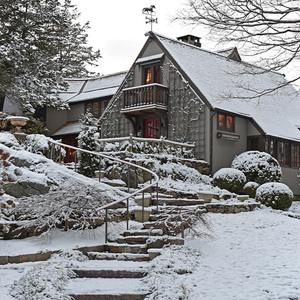steel vs aluminum heat transfer plates
I’m installing a staple-up radiant heat system under an existing floor (old house, beautiful fir floors.) I have the opportunity to buy some steel heat transfer plates at an attractive price and save about $700 on the job. Can anyone speak to how these work in comparison to an aluminum plate like Uponor’s joist track?















Replies
The difference in performance will be slight since you're apparently trying to move heat upwards.
The aluminum would have more reflective value for radiated heat, but only if there were an air space between the pipe and the plate. Anywhere the pipe touches the aluminum, it will actually transfer more heat than steel by means of conduction.
Someone else may have hard numbers on this, but I think the $700 in your pocket tells the story with no deficiency in the system performance.
I'm not really sure what you are trying to say? Aluminum isn't a very good radiator, but it's a great conductor... much better than steel.I believe steel is cheaper. if it were as good, you can bet it would be in much wider use than it is.-------------------------------------
-=Northeast Radiant Technology=-
Radiant Design, Consultation, Parts Supply
http://www.NRTradiant.com
Since it appears that he needs the heat to transfer up to the floor above, my thinking is that the pan underneath, if aluminum, would conduct heat essentially equally, up and down. If he insulates under the pan, whether it's steel or aluminum, the heat will take the path of least thermal resistance to the floor above. If he doesn't insulate, I think the greater conductivity of the aluminum will send more heat down than the steel.
not exactly sound reasoning.heat will go where it goes in both cases... the question is, how much heat and how fast.that is what conductivity improves. more heat, faster, at a lower temperature differential.-------------------------------------
-=Northeast Radiant Technology=-
Radiant Design, Consultation, Parts Supply
http://www.NRTradiant.com
Thanks, that makes sense.
Here's a link (http://madison.craigslist.org/mat/1442610557.html) to an ad for the steel plates.
Uponor's joist trak, if I understand the installation method, places the tubing in a track below the aluminum plate. Just like these steel plates. Isn't heat then being conducted up against the wooden floor?
Or is the idea to heat the air space and, as rt designs says, allow it take the path of least resistance.
And yes, of course, insulation is necessary.
Bird (that rare bird, a female carpenter!)
If I understand your last post Rob, then aluminum is a better choice for its better conductivity. It's going to transfer heat to the floor boards more efficiently.Heating the air space between the floor and the insulation is not the main objective?
"Steel heat transfer plates" is sort of like "jumbo shrimp"
The thermal conductivity of aluminum is about 250, in a particular set of units. By comparison, copper is about 400, but steel is 43.
That's it, about one-sixth as thermally conductive.
What this means is that the plate under the floor, if steel, will have a much higher thermal gradient across its width, and a narrower "warm strip" in the center, and hence far less radiating area.
Since I do this in my real life, I've got some cool GrafTech graphite material that has a conductivity of 1500 (used in some cellphones). Dip one end of a 12" strip in my coffee, and the other end is almost immediately too hot to hold.
Interesting, the when the rep visited last week, he told me that they have gotten their price down on their lower-conductivity stuff (300-400), they're competitive with the aluminum - and a hell of a lot easier to install - it staples up like #30 tarpaper over the tubing. you can just push it over any errant nails.
Check them out - http://www.graftechaet.com/eGRAF/eGRAF-Products/SPREADERSHIELD-2-D-Heat-Spreaders.aspx
Forrest
Carbon fiber heat plates... is it a weave material or one direction fiber held together with an epoxy?
I have an 85 meter long roll of 6" wide carbon fiber from the days of General Dynamics and their "A-12" flying triangle fighter that was canceled... Would this material, about the thickness of a playing card, .007, transfer heat as in using it for a solar heater collector plate under glass?
Just trying to see what to do with this material... ;>)
Bill
It's not carbon fiber - it's just granular graphite, rolled and presed some way into a sheet - it's got very low mechanical strength.
Interestingly, the good conductivity is all in-plane - through-plane is perhaps 1/100 of that!
Forrest
I'm with most ... aluminum transfers ... i.e. conducts heat MUCH better than steel ... that is why it is used often to transfer heat (MOST widely used for any applications for heat dissapation). There is a reason aluminum is used, a good reason.
Save $700 w/ steel? That's a chunk, though. I only spent maybe $400 on my aluminum for my whole house. You must have a very large project.